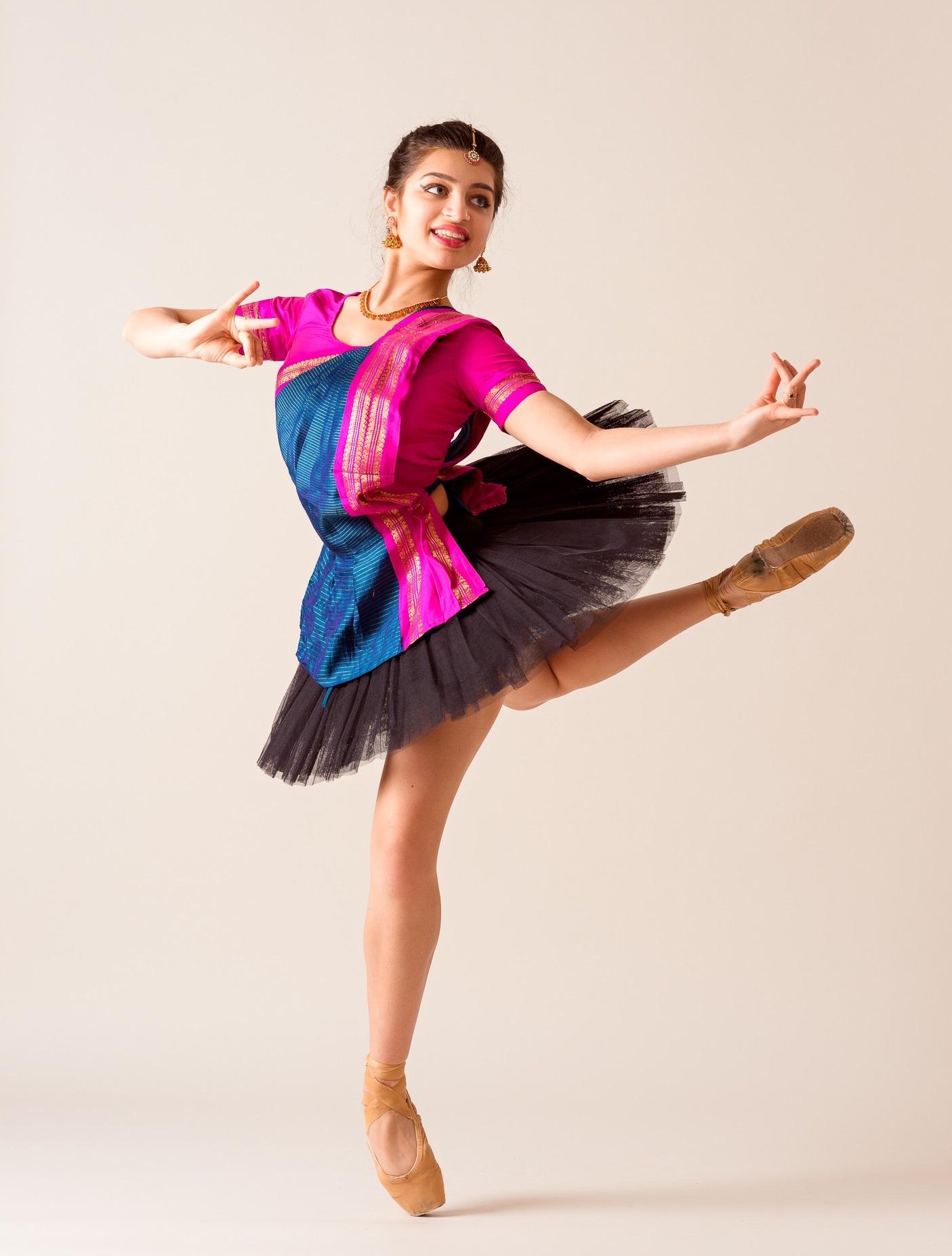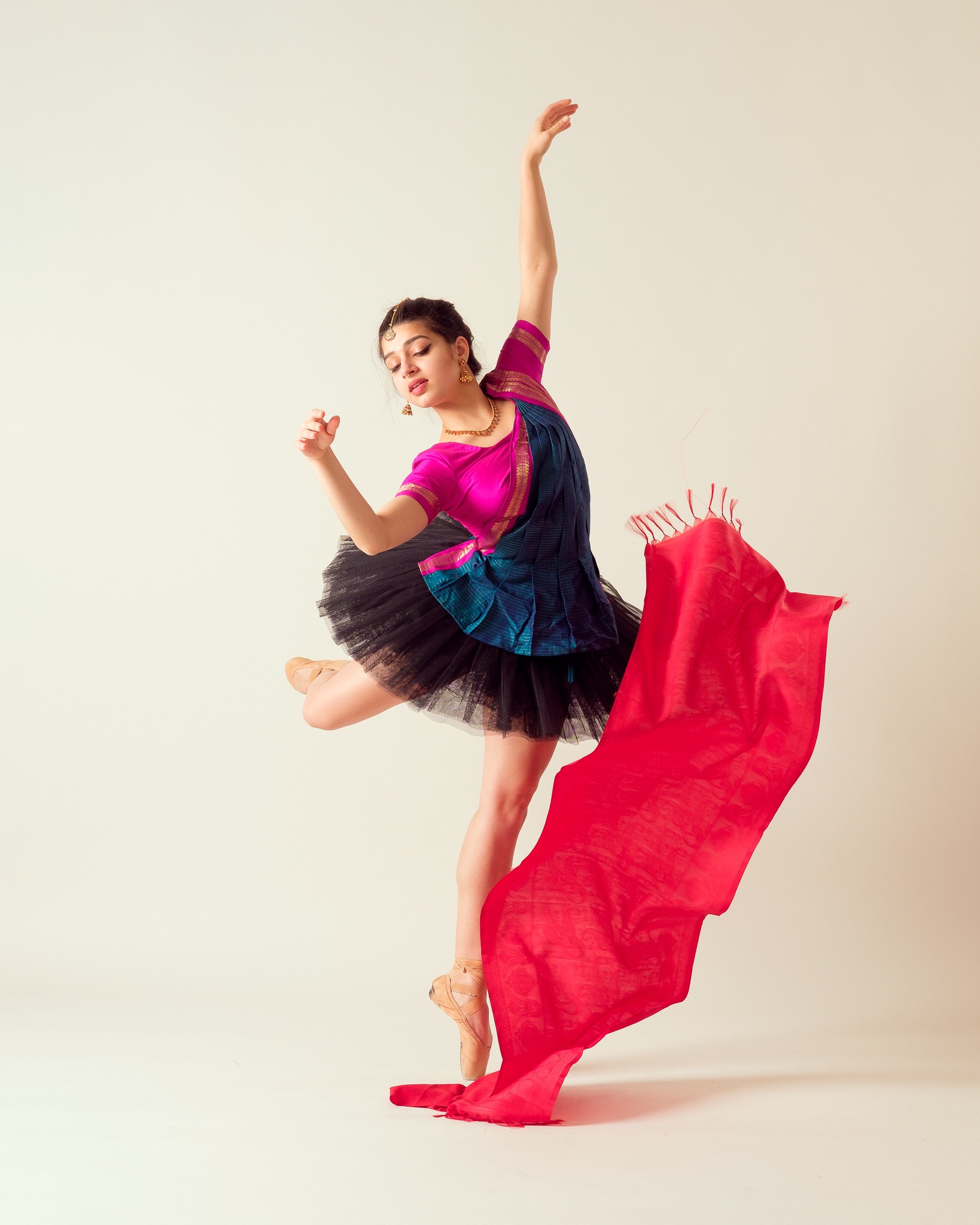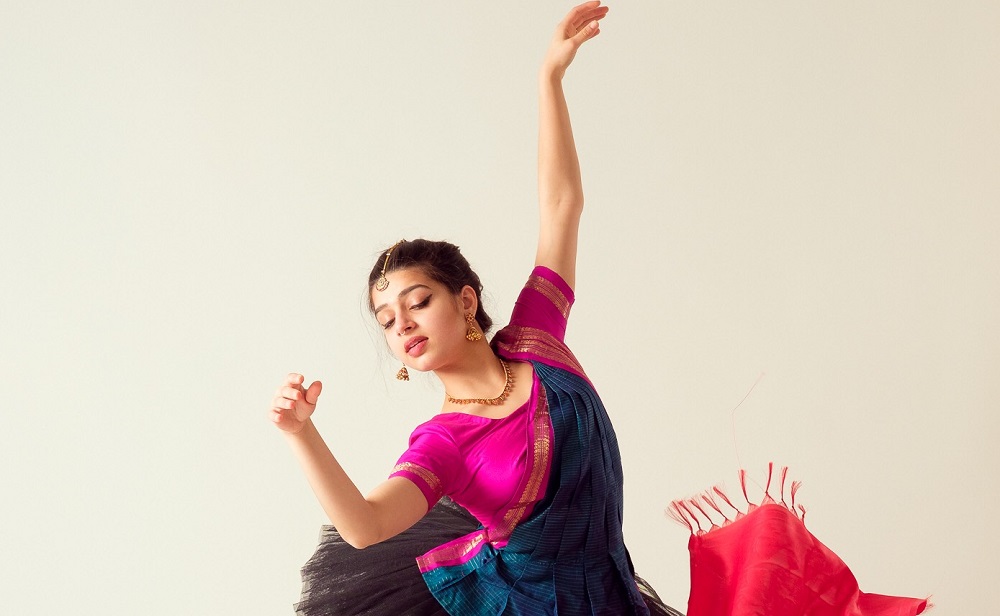Meet Sudarsna Mukund: a full-time ballerina, and part-time student.
“I’m in an online bachelors degree program at Northeastern University, but ballet is my career,” she tells me.
I ask her what she is up to at the moment and she tells me she is an apprentice at a ballet company and works at a yoga studio as a receptionist and in marketing.
At only 20 years old, Sudarsna has a clear vision and purpose for her ballet career.
“I plan on dancing for as long as I can, until 35, maybe. Then, I’d love to find a way to mix ballet and science, somehow.”
She told me this before I even asked her any questions about the practicality of ballet as a lifelong career. In Sudarsna’s case, she pursues ballet not only to chase her passion and prove herself in the ballet world, but to give young South Asian kids what she never had growing up: representation.
[Read Related: Ayana Arts’ Show, ‘In Full Bloom,’ to Provide Platform for Multicultural Identities]
“I’ve always felt ballet is not very inclusive. A lot of it has to do with the history of ballet. Ballet was conceived in France, codified by the French and refined by the Russians. Today, ballet has a stereotype and stigma attached to it: that ballet is an activity for rich white girls.”

Sudarsna grew up in Boston and studied Bharatnatyam and ballet before fully committing to ballet. She knew she wanted to be a dancer at just 12 years old. Among her many achievements include studying at the Boston Ballet School in Massachusetts and receiving an internship at the American Repertoire Ballet.
“Boston is a diverse place, but I was surrounded by people I couldn’t relate to. I had no role model growing up who was Indian and doing ballet. The environment was inwardly hostile and there were internal politics at play I wasn’t aware of because I simply wasn’t part of a clique.”
Basically, there is a lack of representation in ballet that makes it difficult for minority men and women to get jobs. The average ballet dancer is still of Caucasian descent. I ask Sudarsna if she has experienced any racism while auditioning for jobs or playing parts in productions and she introduces me to the concept of “passable white” (when you look light enough that you can get away with being white on stage).
[Read Related: How Prince Harry and Meghan Markle’s Royal Wedding Represented Diversity in British Royalty]
“When people tell me there is representation in ballet due to the number of Asian ballerinas, I say yes, because they are passable white.”
Sudarsna then asks the million dollar question: “Why do we have to pass for white? Why can’t we be celebrated just as we are?”
The lack of diversity in ballet isn’t just an issue for ballet dancers, it’s an issue for the audience as well. The current ballet culture doesn’t make a ballet production an experience relatable to non-Caucasian audience members.
“A lot of people can’t relate to classic productions such as Swan Lake or Sleeping Beauty. When Misty Copeland debuted as the lead in Swan Lake, the audience was mostly black and brown people. It’s a two-way street. The ballet community needs to foster diversity and then we will see a diverse audience.”
The ballet world is full of people with an old-fashioned approach who refuse to acknowledge that diversity and inclusion are needed to keep ballet alive. I ask Sudarsna what keeps her going despite the low job prospects, long hours and minimal pay (Misty Copeland makes more from her deal with Under Armour that working for the American Ballet Theatre).

“I believe the next generation of minority artists, we are the ones that will be able to update ballet from its 18th-century format and integrate it across cultures. And also, us Indians as a community are highly intelligent and successful. We can use the same drive, savviness and work ethic that brings us success in traditional career paths to be successful in creative careers. I want to be a living example of this and prove its possible.”
Like I said, Sudarsna’s drive to pursue a career in ballet isn’t just about her. It’s about you and me, us South Asians as a community and showing the world that we can excel in just about any career we choose.
Observing all the successful South Asian social media influencers today who are carving their creative lanes, I couldn’t agree more.
Find Sudarsna at sudarsna.com and on Instagram @sudarsnak.





